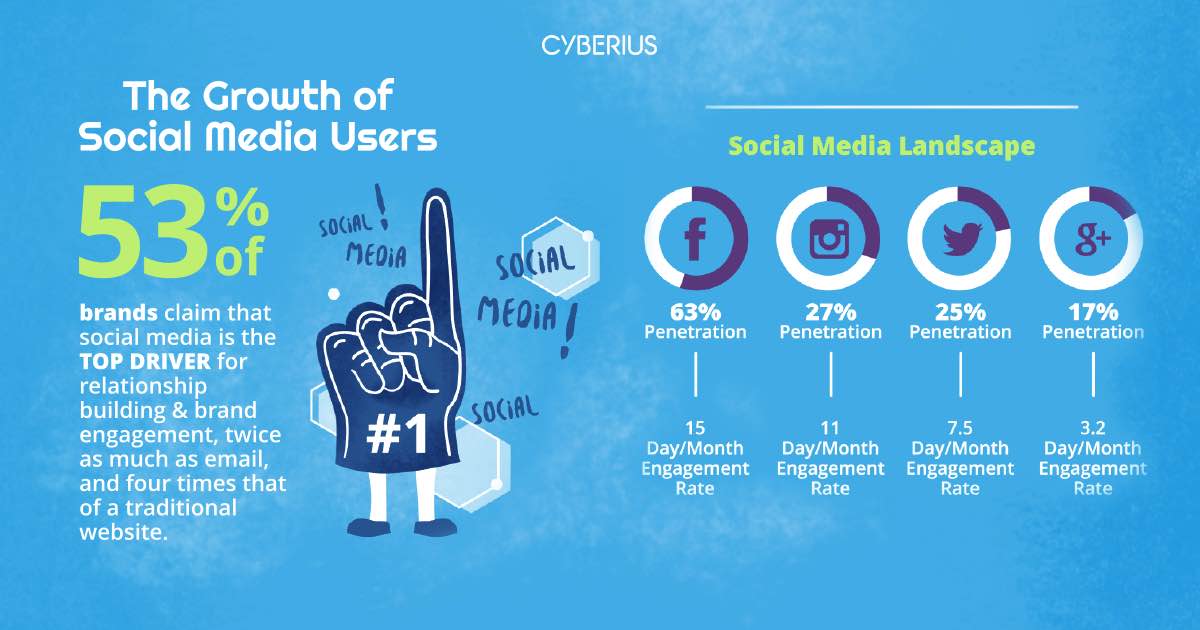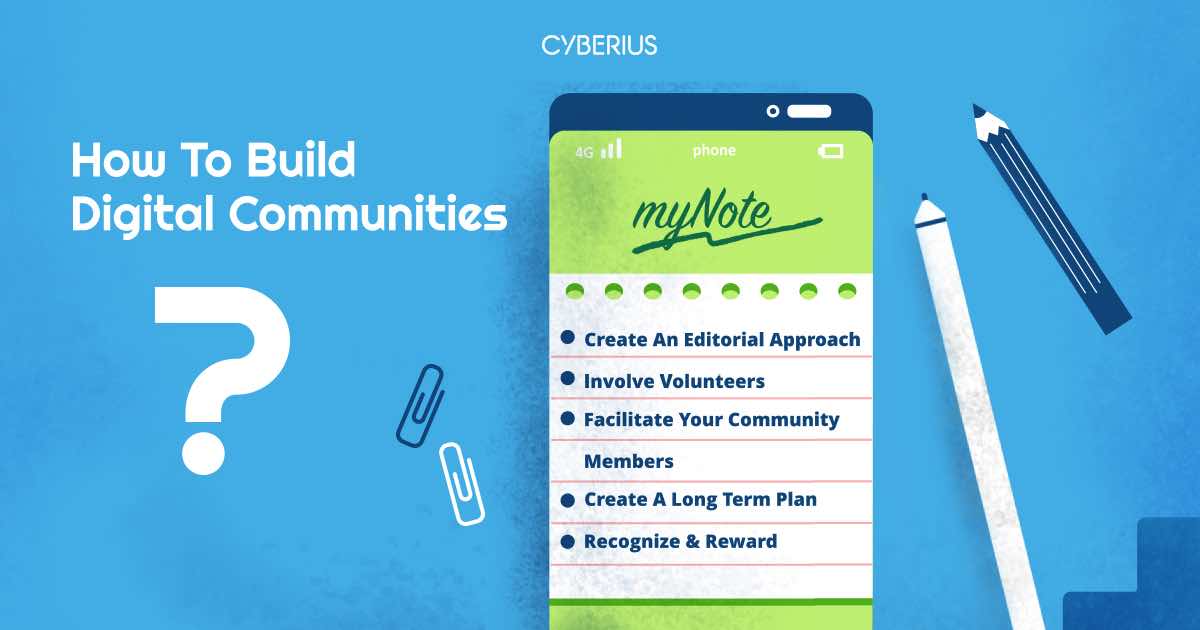Technology has changed dramatically over the last few centuries, and businesses have changed with it. As the paradigm keeps shifting, marketing techniques and tools also adapt accordingly.
From the 1950s to almost 2000, marketing was more about simply communicating the features and benefits of the products being sold.
However, a major shift came in the early 2000s. With the growth of information technology, it became easier to understand customers better and personalize products and services accordingly. As a result, the focus shifted from the features of the product to the customer and what they needed. This was known as Marketing 2.0.
In the last 20 years or so, influential shifts in technology have continued to take place. As a result, marketing has changed quicker than ever before. We witnessed the brief era of marketing 3.0 and lately, marketing 4.0 has entered the scene.
From the 1950s to almost 2000, marketing was more about simply communicating the features and benefits of the products being sold.
However, a major shift came in the early 2000s. With the growth of information technology, it became easier to understand customers better and personalize products and services accordingly. As a result, the focus shifted from the features of the product to the customer and what they needed. This was known as Marketing 2.0.
In the last 20 years or so, influential shifts in technology have continued to take place. As a result, marketing has changed quicker than ever before. We witnessed the brief era of marketing 3.0 and lately, marketing 4.0 has entered the scene.
What are Marketing 3.0 and Marketing 4.0?
Marketing 3.0 brought a influential shift in understanding consumer behaviour. As social media grew dramatically, people became connected to each other and more open about their inner desires, and causes. Marketing 3.0 moves beyond how customers will use a product to what moves them to want to use the product. What are the social, economic, and environmental causes that touch their soul?
Marketing 3.0 means going beyond customers’ material needs to discover what they are passionate about. It means companies align their brand strategy in a way that products resonate with customers’ deeper desires and passions. In the last few years, many companies have adopted this strategy and seen phenomenal returns.
The newest kid on the block is Marketing 4.0. The internet has advanced at a breathtaking pace in the last few years. New technologies like IoT, 3D printing, cloud tech, and mobile internet are starting to hold sway. This has massive implications for how business is done in general and marketing in particular. Marketing 4.0 talks about the penetration of mobile internet and other new technologies and how marketers need to adapt in response.
We also live in an age where consumers are continuously bombarded with information from many different channels. It’s important for brands to find and maintain a voice that is both authentic and unique. As the world becomes more connected, this is the one thing that can truly differentiate a brand.
Yet, another trend in today’s economy is that connected devices have become very commonplace. People are more addicted to these devices than ever before. That’s why human-to-human connectivity has become both rare and valuable. Companies that build their marketing strategy around a human connection are more likely to stand out.
Marketing 3.0 means going beyond customers’ material needs to discover what they are passionate about. It means companies align their brand strategy in a way that products resonate with customers’ deeper desires and passions. In the last few years, many companies have adopted this strategy and seen phenomenal returns.
The newest kid on the block is Marketing 4.0. The internet has advanced at a breathtaking pace in the last few years. New technologies like IoT, 3D printing, cloud tech, and mobile internet are starting to hold sway. This has massive implications for how business is done in general and marketing in particular. Marketing 4.0 talks about the penetration of mobile internet and other new technologies and how marketers need to adapt in response.
We also live in an age where consumers are continuously bombarded with information from many different channels. It’s important for brands to find and maintain a voice that is both authentic and unique. As the world becomes more connected, this is the one thing that can truly differentiate a brand.
Yet, another trend in today’s economy is that connected devices have become very commonplace. People are more addicted to these devices than ever before. That’s why human-to-human connectivity has become both rare and valuable. Companies that build their marketing strategy around a human connection are more likely to stand out.
Why Have Digital Communities Become Important?
Marketing 4.0 is about moving away from the traditional concept of understanding consumer behaviour through segmentation and targeting. In marketing today, it can be very useful to build a community around your brand, with the customer at the centre of it all. Customers are now connected through online networks and are interested in engaging with the products they love. Marketers can incorporate this feedback into their products to make them better for a specific target audience.
Many of today’s customers are not content with just being passive users. With technology-led interconnectedness and access, many consumers now want to engage with their brands. They want their feedback to be valued and lead to product improvements. Brands that use online communities to build and leverage this customer engagement can grow very quickly.
A survey showed that as many as 81% of the respondents had community-led support channels. This was just 67% in 2012, which goes to show that companies are increasingly adopting a community-centric approach. 53% of brands believe that social media is the most effective tool for customer engagement, above tools like email and websites. No wonder that social media-based communities are slowly becoming the norm for successful brands. In fact, a study showed that customers spend 19% more once they join a company’s online community.
Many of today’s customers are not content with just being passive users. With technology-led interconnectedness and access, many consumers now want to engage with their brands. They want their feedback to be valued and lead to product improvements. Brands that use online communities to build and leverage this customer engagement can grow very quickly.
A survey showed that as many as 81% of the respondents had community-led support channels. This was just 67% in 2012, which goes to show that companies are increasingly adopting a community-centric approach. 53% of brands believe that social media is the most effective tool for customer engagement, above tools like email and websites. No wonder that social media-based communities are slowly becoming the norm for successful brands. In fact, a study showed that customers spend 19% more once they join a company’s online community.

What Are The Benefits Of Digital Communities?
Having active and engaged online communities has some important benefits for brands.
There is a reason that 77% of companies surveyed said that a digital community increases brand exposure and credibility. Here are some of the most important benefits of having an active online community.
There is a reason that 77% of companies surveyed said that a digital community increases brand exposure and credibility. Here are some of the most important benefits of having an active online community.
Instantaneous Assessment of Customer Satisfaction
Earlier, collecting results about customer satisfaction was a long and arduous task. With an active online community, all that changes. Companies can instantly understand the pulse of their customers through online polls or qualitative surveys. In fact, companies can even assess the reaction of their customers to new features they introduce in their products.Product Improvement
Digital communities allow customers to air their grievances or satisfaction almost immediately. Brands can use this feedback to reduce the innovation cycle and make very quick product improvements. This is especially true for digital products and services. As a result, the customer experience is at the centre of the whole product improvement process.Retaining Customers
New customers often find support in a digital community. The community helps with their queries and introduces them to new features and ways of using the product. This tends to enhance their user experience and make them stick with the product. Airbnb has a community of hosts that help new hosts navigate their way. Similarly, Masterclass has a very strong online community that helps enhance the learning experience.Customer Advocacy is Possible
Traditional customer support stops at just resolving customer issues. Online communities can go one step further. Instead of just resolving a customer’s issue, they can make sure the customer is actually happy and becomes an advocate. With effective digital communities, it’s possible for brands to move towards consumer advocacy.Being In Constant Touch With Your Audience
Almost 79% of social media use is on mobile devices, so it’s very likely that your community members will be participating in the community on the go. This kind of constant & intimate contact helps you get your finger firmly on the pulse of your audience. It also helps improve brand visibility immensely if you’re constantly at the back of your customers’ mind through their social media feed or notifications.

Learning And Career Opportunities
Some online communities, especially those in the education technology sector, really stimulate learning, and discussion. This not only helps drive user engagement but also helps users grow as students and professionals. A great example is the Masterclass online community in which people have rich discussions on the classes and coursework which makes the learning experience more meaningful.
Relevant communities can even open up career opportunities for members by connecting them to people in their industry. When members start engaging at this level, you know you have managed to generate invaluable customer loyalty.
Relevant communities can even open up career opportunities for members by connecting them to people in their industry. When members start engaging at this level, you know you have managed to generate invaluable customer loyalty.
How Can You Build A Strong Digital Community?
Digital communities very rarely grow organically. In most cases they require active nurturing from brand strategists and community managers. These are some of the most important tactics that brands looking to build a strong online community use.
Crowdsource Your Content
Most successful online communities realize that they have higher chances to succeed if customers have a chance to engage completely. They don’t want customers to just be passive consumers of content on these platforms. They want customers to be engaged in the process of content creation as well. Brands like Starbucks and Kraft, for instance, have forums where customers share recipes that use products by the brand.Offline Initiatives to Supplement the Online Community
According to Marketing 4.0, with an overload of information online, the human connection has become invaluable. Therefore, it makes sense to supplement your online community with offline events like local meetups. These can really create a major differentiation for a brand.Start Early
Many brands now begin building an online community even before the full-scale launch of their product. An early launch helps you get the critical feedback of first-adopters which is very important to help improve the product. It also helps to ensure that you have a strong and loyal customer base from the very beginning. Your online community doesn’t have to be very elaborate at first, you can start with a simple discussion forum.Choose the right social media channels
It’s also critical to choose the right social media channels to build your community on. Twitter is a great forum for effective customer support, Facebook helps you cater to a wider audience and Instagram works well if your audience is young and hip. At the same time, there also some strict no-nos when it comes to effective community management and brands should keep these in mind also.Don’t Spam Potential Members With Links To The Community
It’s great to be enthusiastic about your online community and it’s also good to spread the word, but this must always be done in a subtle yet effective way. Spamming people with links to your group via messages on Facebook and Quora is a sure fire way to reduce the credibility of your community. A much more effective tool is to communicate lesser with potential customers but make sure that the link to the community is accompanied by content that they will value.Don’t Use The Community To Just Showcase Your Own Content
The digital community is the wrong forum for community managers to showcase their content and creativity. An online community is successful only when content is generated mostly by users themselves; whether it’s asking and answering questions, product insights, discussions, and advice.
Yes, building digital communities can be very beneficial for your business. Start now!
When used effectively, digital communities can really engage customers at a deep level and help transform the essence of the brand and its perception in the minds of users. Having a thriving digital community is not just desirable, but can be essential for certain businesses that want to get ahead in today’s dynamic digital landscape. For more tips and tricks for your business, check out this infographic about Digital Marketing vs Traditional Marketing.Growth Hackers is a one-stop shop search engine marketing agency helping businesses build digital communities through content creation, social media marketing, email growth hacks, etc. We help businesses from all around the globe reach their target audience, drive traffic to their content, generate leads, automate processes, optimize conversions and increase sales. Talk to one of our growth hackers today if you want to build your digital community and grow your business.




